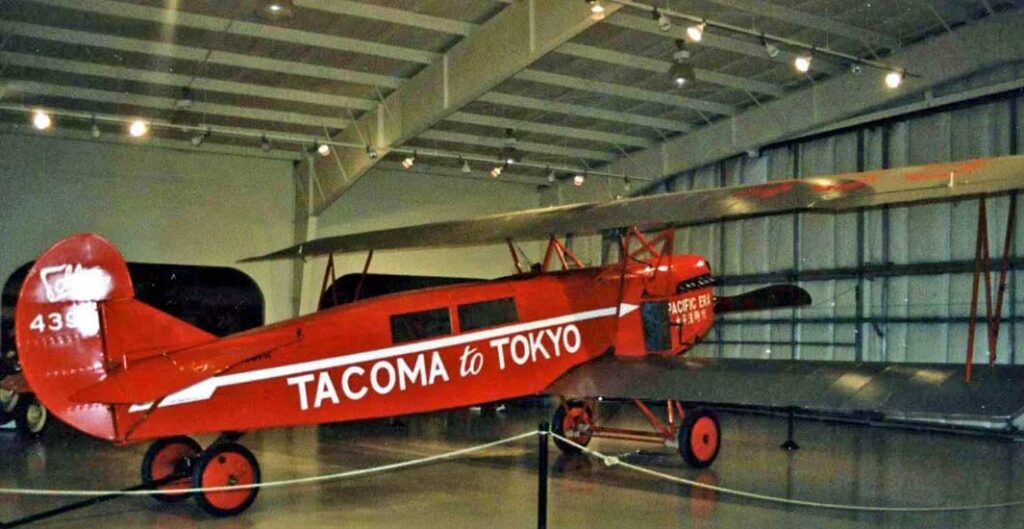The Fokker C.IV, a versatile reconnaissance and light bomber biplane, leveraged World War I aerodynamics for peacetime military utility. The Fokker C.IV represents an evolutionary step in military aviation, serving as a bridge from wartime exigencies to peacetime reconnaissance and bombing roles. This article details its inception in the context of post-WWI needs, technical design features including its performance specifications, military application, operational history, and its place in the pantheon of early 20th-century aircraft.
The aftermath of World War I saw a significant shift in military strategies and the role of aviation. Combat had proven the value of air reconnaissance and tactical bombing, leading to the development of specialized aircraft to fulfill these roles. The Fokker C.IV emerged as a product of this period, designed to serve multiple roles from reconnaissance to light bombing.
History of the Development of the Fokker C.IV:
In the wake of World War I, the newly established nations and restructured old powers were in urgent need of rebuilding their air forces. The Fokker C.IV was a direct response to this need. Designed by the Dutch aircraft manufacturer Fokker, a company renowned for its wartime fighter planes, the C.IV was intended to serve as a versatile platform capable of both reconnaissance and light bombing missions.
The aircraft was a reflection of its time, combining the reliable design principles of late WWI with the peace-driven requirements of the 1920s. The development program was initiated by Anthony Fokker, the company’s founder, who aimed to capitalize on the experience gained from producing successful warplanes like the Fokker D.VII.
The Fokker C.IV first took to the skies in 1920.
Design of the Fokker C.IV:
The C.IV’s design was a continuation of the biplane configuration that dominated military aircraft design during WWI. It featured a conventional wood and fabric construction, a fixed tailskid landing gear, and an open cockpit design that was standard at the time. The aircraft had a wingspan of approximately 14.8 meters (48.5 feet) and a length of 9.5 meters (31.2 feet), with a wing area of about 39 square meters (420 square feet). It accommodated two crew members: a pilot and an observer/gunner.
Advantages of the C.IV included its multi-role capability and the ease of flying, attributed to its stable flight characteristics. However, its relatively conventional design also meant it was quickly outpaced by the rapid advancements in aeronautical engineering during the 1920s.

Performance of the Fokker C.IV:
Powered by a variety of engines throughout its production, including the BMW IIIa inline-six engine, it delivered around 185 horsepower. The C.IV could reach a maximum speed of approximately 175 km/h (109 mph) and had a service ceiling of 6,500 meters (21,325 feet). Its operational range was around 600 kilometers (373 miles), a respectable distance for reconnaissance missions of the era.
When compared to its contemporaries, the C.IV’s performance was adequate but not exceptional. Aircraft like the Bristol F.2 Fighter had set a high standard during the war, and the C.IV was designed more for versatility than for breaking performance records.
Military Use and Combat of the Fokker C.IV:
The C.IV was equipped with a flexible machine gun for the observer and provisions for light bombs. Its military use was primarily for reconnaissance and light bombing roles in the early post-war years. It saw service with the Netherlands and several other countries but was not involved in significant combat operations.
By the late 1920s and early 1930s, the Fokker C.IV had been surpassed by more advanced designs and was phased out of service. Its direct replacements were often monoplanes, which offered better performance and newer technologies.
The Fokker C.IV holds a place in aviation history as a symbol of the transition from war to peace. While it did not achieve the fame of its WWI predecessors, its service in the interwar period was a testament to the ongoing evolution of military aviation and the role of aircraft in modern warfare. The C.IV’s design and versatility provided a foundation upon which later, more advanced aircraft were built.
Back to the Spy Planes section.